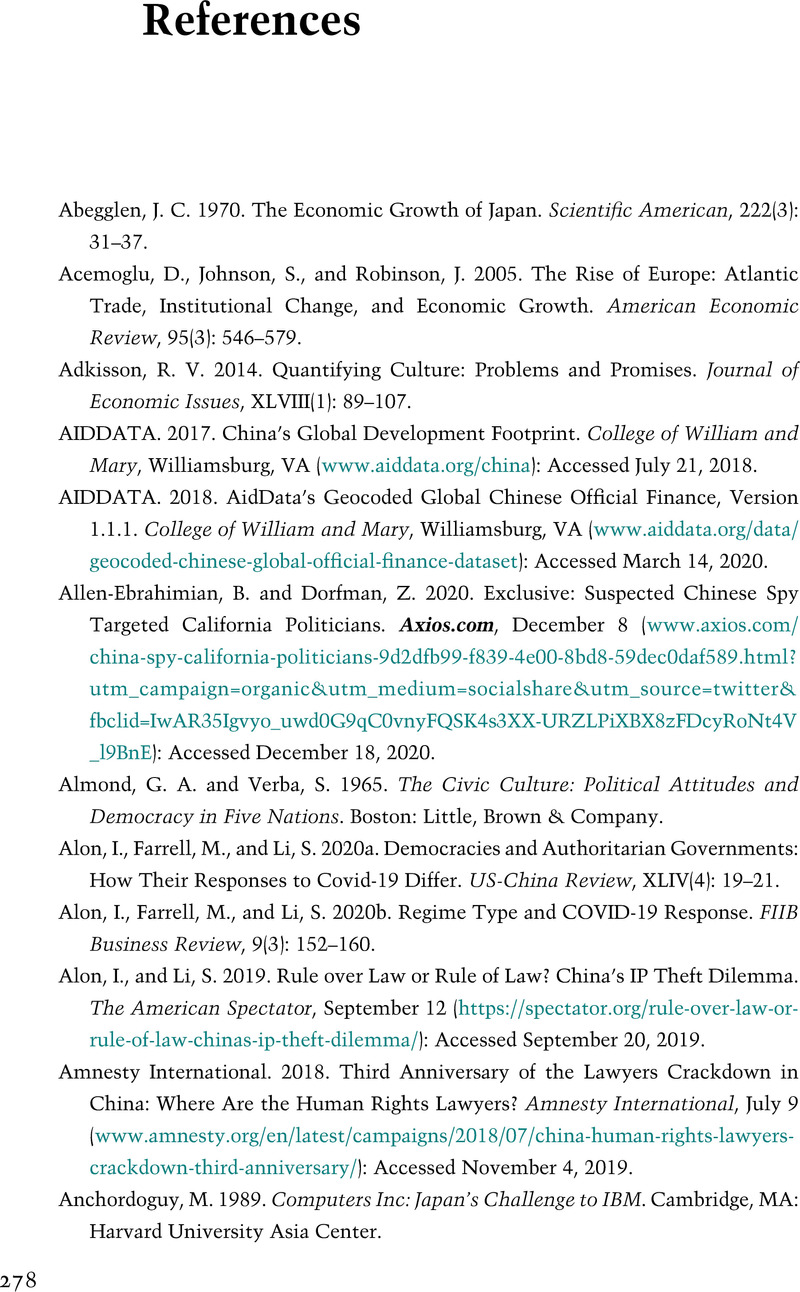References
Published online by Cambridge University Press: 06 January 2022
Summary

- Type
- Chapter
- Information
- The Rise of China, Inc.How the Chinese Communist Party Transformed China into a Giant Corporation, pp. 278 - 322Publisher: Cambridge University PressPrint publication year: 2022



